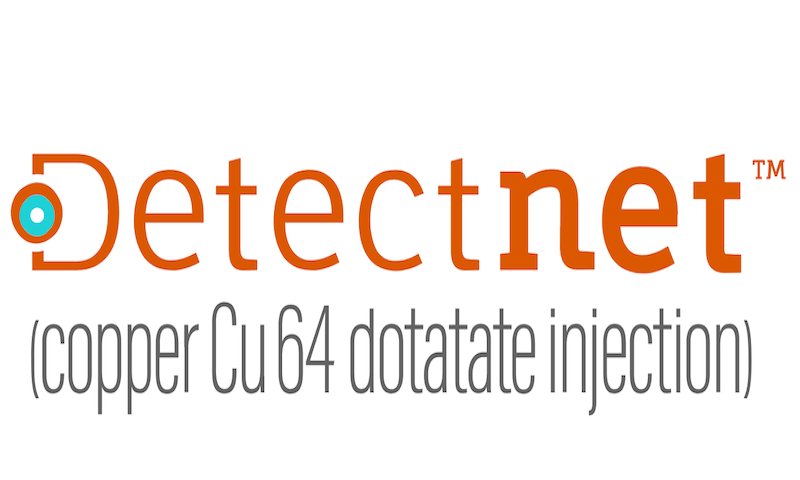
9th Dezember 2020
RadioMedix & Curium Announce CMS Transitional Pass-Through Status for Detectnet™ (copper Cu 64 dotatate injection)
———
Download as PDF: English
———
(St. Louis, MO – December 9, 2020) – RadioMedix Inc. and its commercial partner Curium announced today that the Centers for Medicare & Medicaid Services (CMS) has granted Detectnet Transitional Pass-Through Status (code C9068) effective January 1, 2021. The descriptor for Detectnet will be: Copper Cu-64, dotatate, diagnostic, 1 millicurie. C9068 will be used to bill Detectnet for Medicare patients seen in the hospital outpatient department.
“The response to Detectnet in the neuroendocrine community has been tremendous,” said Curium CEO, North America, Dan Brague. “Once in effect, this code will simplify the billing and reimbursement of Detectnet for our customers. We have been dedicated to helping patients in the neuroendocrine community for over 20 years and are excited to share this new code.”
“The recent inclusion in a major Appropriate Use Criteria confirms the clinical utility of Detectnet in the neuroendocrine community,” said Ebrahim Delpassand, MD, CEO of RadioMedix. “The issuance of C9068 should further simplify the reimbursement process and help patients in need.”
About Detectnet
INDICATIONS
Detectnet is indicated for use with positron emission tomography (PET) for localization of somatostatin receptor positive neuroendocrine tumors (NETs) in adult patients.
IMPORTANT RISK INFORMATION
WARNINGS AND PRECAUTIONS
Radiation Risk
Diagnostic radiopharmaceuticals, including Detectnet, contribute to a patient’s overall long-term cumulative radiation exposure. Long-term cumulative radiation exposure is associated with an increased risk of cancer. Ensure safe handling and preparation procedures to protect patients and health care workers from unintentional radiation exposure. Advise patients to hydrate before and after administration and to void frequently after administration.
Risk for Image Misinterpretation
The uptake of copper Cu 64 dotatate reflects the level of somatostatin receptor density in NETs, however, uptake can also be seen in a variety of other tumors that also express somatostatin receptors. Increased uptake might also be seen in other non-cancerous pathologic conditions that express somatostatin receptors including thyroid disease or in subacute inflammation, or might occur as a normal physiologic variant (e.g. uncinate process of the pancreas).
A negative scan after the administration of Detectnet in patients who do not have a history of NET disease does not rule out disease.
ADVERSE REACTIONS
In clinical trials, adverse reactions occurred at a rate of < 2% and included nausea, vomiting and flushing. In published trials nausea immediately after injection was observed.
DRUG INTERACTIONS
Somatostatin Analogs
Non-radioactive somatostatin analogs and copper Cu 64 dotatate competitively bind to somatostatin receptors (SSTR2). Image patients just prior to dosing with somatostatin analogs. For patients on long-acting somatostatin analogs, a wash-out period of 28 days is recommended prior to imaging. For patients on short-acting somatostatin analogs, a washout period of 2 days is recommended prior to imaging.
USE IN SPECIFIC POPULATIONS
Pregnancy
All radiopharmaceuticals, including Detectnet, have the potential to cause fetal harm depending on the fetal stage of development and the magnitude of the radiation dose. Advise a pregnant woman of the potential risks of fetal exposure to radiation from administration of Detectnet.
Lactation
Advise a lactating woman to interrupt breastfeeding for 12 hours after Detectnet administration in order to minimize radiation exposure to a breastfed infant.
Pediatric use
The safety and effectiveness of Detectnet have not been established in pediatric patients.
Geriatric use
In general, dose selection for an elderly patient should be cautious, usually starting at the low end of the dosing range, reflecting the greater frequency of decreased hepatic, renal, or cardiac function, and of concomitant disease or other drug therapy.
OVERDOSAGE
In the event of a radiation overdose, the absorbed dose to the patient should be reduced where possible by increasing the elimination of the radionuclide from the body by reinforced hydration and frequent bladder voiding. A diuretic might also be considered.
Please see Full prescribing information by clicking here.
About RadioMedix
RadioMedix, Inc. is a clinical stage biotechnology company, based in Houston, Texas, focused on innovative targeted radiopharmaceuticals for diagnosis, monitoring, and therapy of cancer. The company is commercializing radiopharmaceuticals for PET imaging and therapeutic (alpha and beta-labeled) radiopharmaceuticals. RadioMedix has also established contract service facilities for academic and industrial partners: Full cGMP manufacturing and analytical suites for human clinical trials, and commercial phase manufacturing of the radiopharmaceuticals, and probe development and small animal Molecular Imaging Facility for pre-clinical evaluation of radiopharmaceuticals in animal models. To learn more, visit www.radiomedix.com. For more information about this press release, please contact: media@radiomedix.com
About Curium
Curium is the world’s largest nuclear medicine company. We develop, manufacture and distribute world-class radiopharmaceutical products to help patients around the globe. Our proven heritage combined with a pioneering approach are the hallmarks to deliver innovation, excellence and unparalleled service.
With manufacturing facilities across Europe and the United States, Curium delivers SPECT, PET and therapeutic radiopharmaceutical solutions for life-threatening diseases to over 14 million patients annually. The name ‘Curium’ honors the legacy of pioneering radioactive researchers Marie and Pierre Curie, after whom the radioactive element curium was named and emphasizes our focus on nuclear medicine. To learn more, visit curiumpharma.com. For more information about this press release, please contact Janet Ryan, media contact for Curium: janet@ryan-pr.com.
About Neuroendocrine Tumors
Neuroendocrine tumors (NETs) are a heterogeneous group of rare neoplasms that originate from neuroendocrine cells. These neoplasms occur mostly in the gastrointestinal tract, pancreas and liver, but can also occur in other tissues including lung, thymus and other uncommon sites such as cervix, heart and prostate. Most NETs strongly express somatostatin receptors (SSTRs).